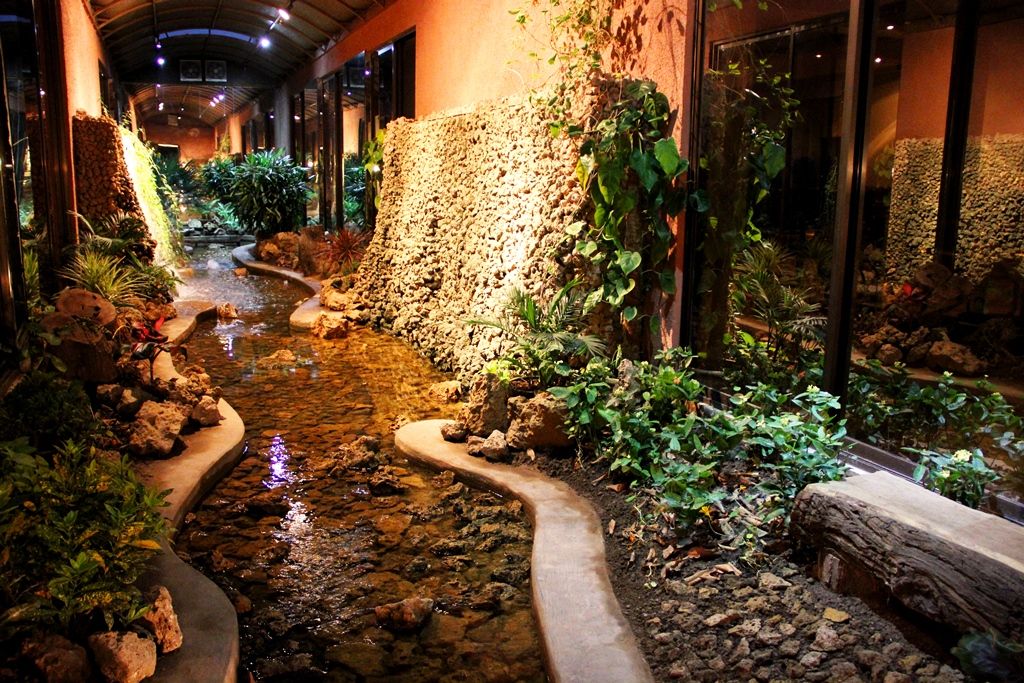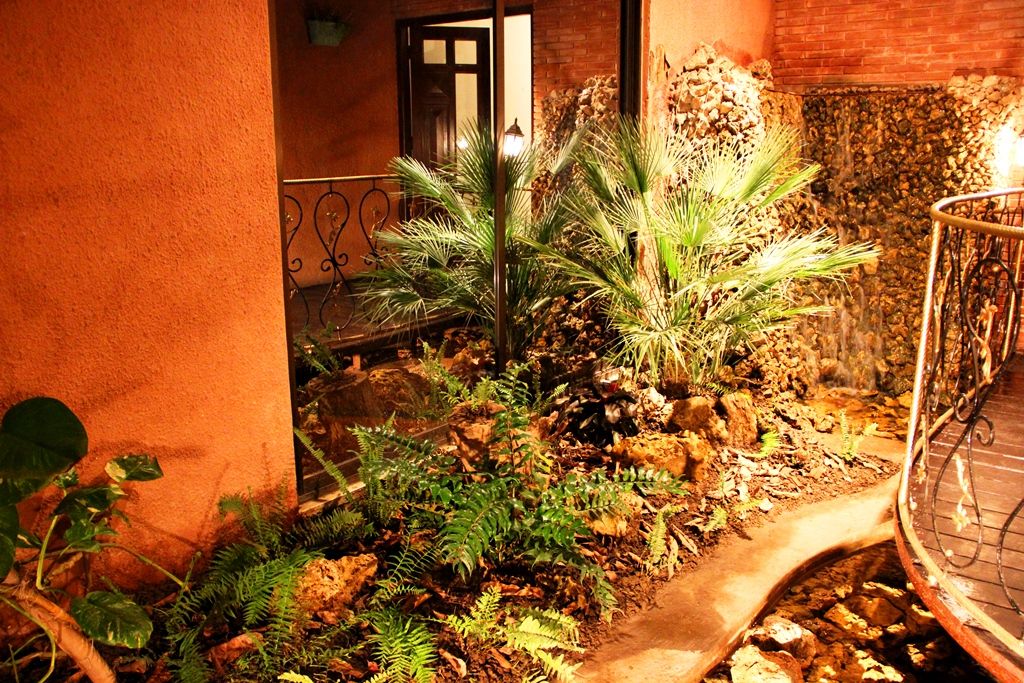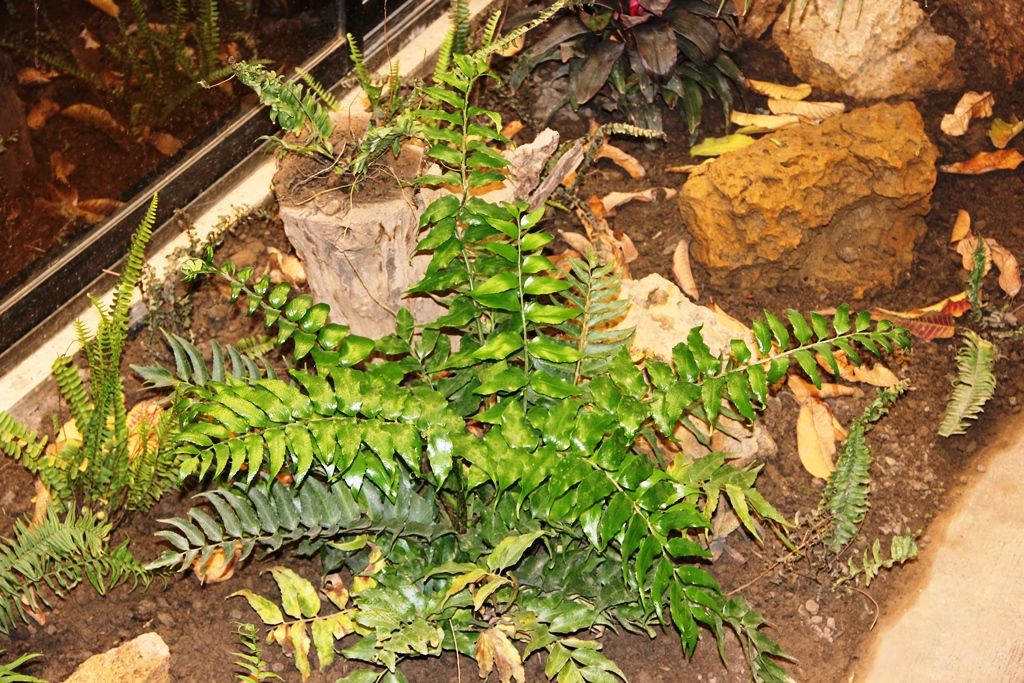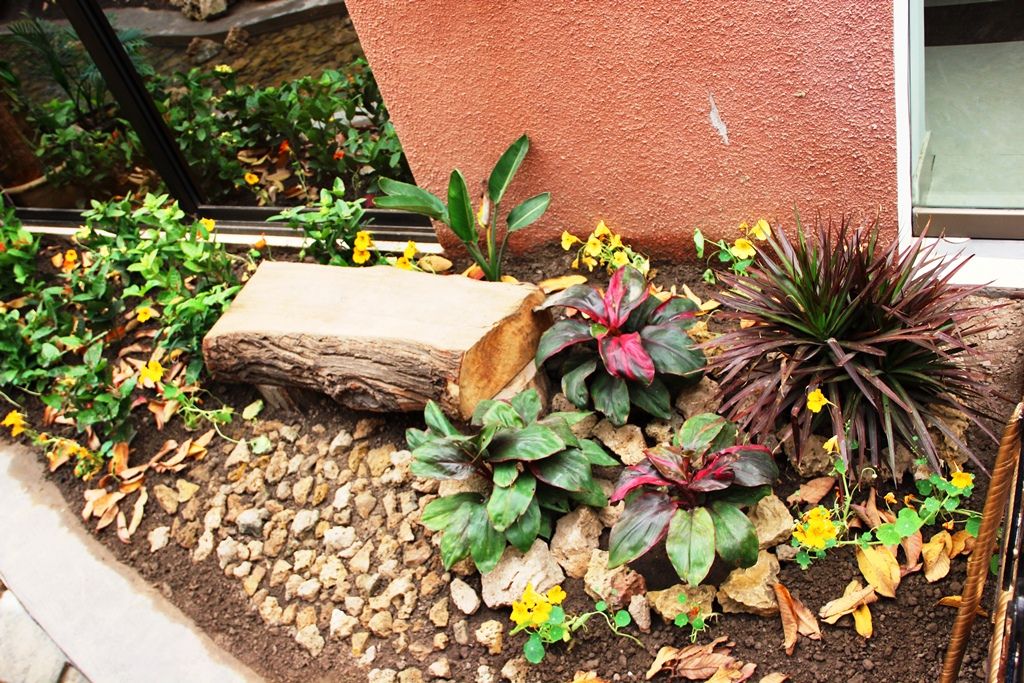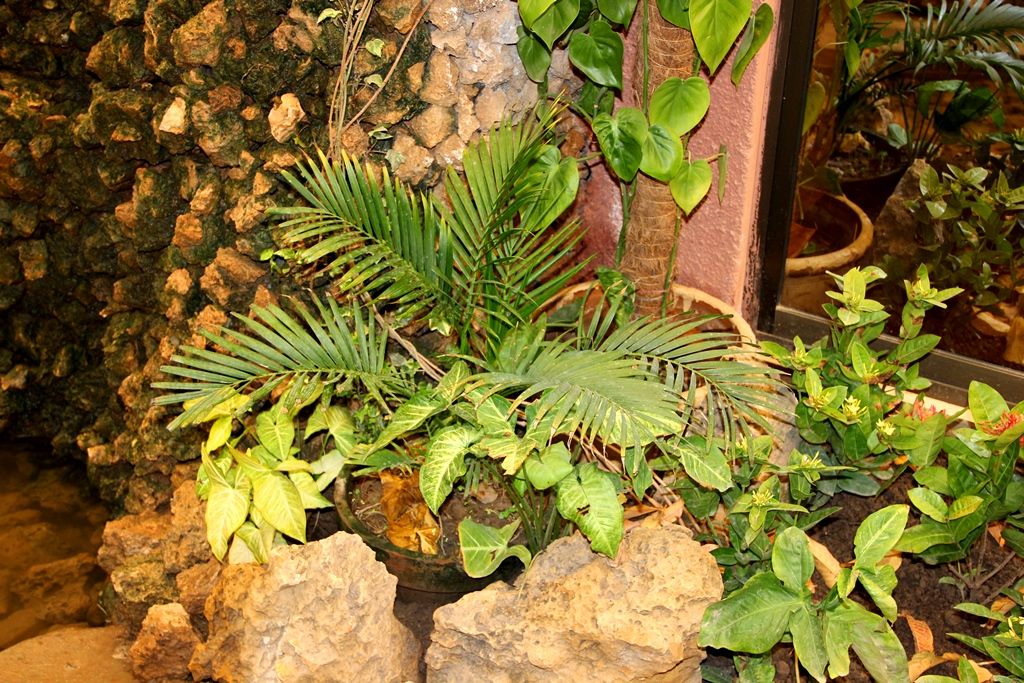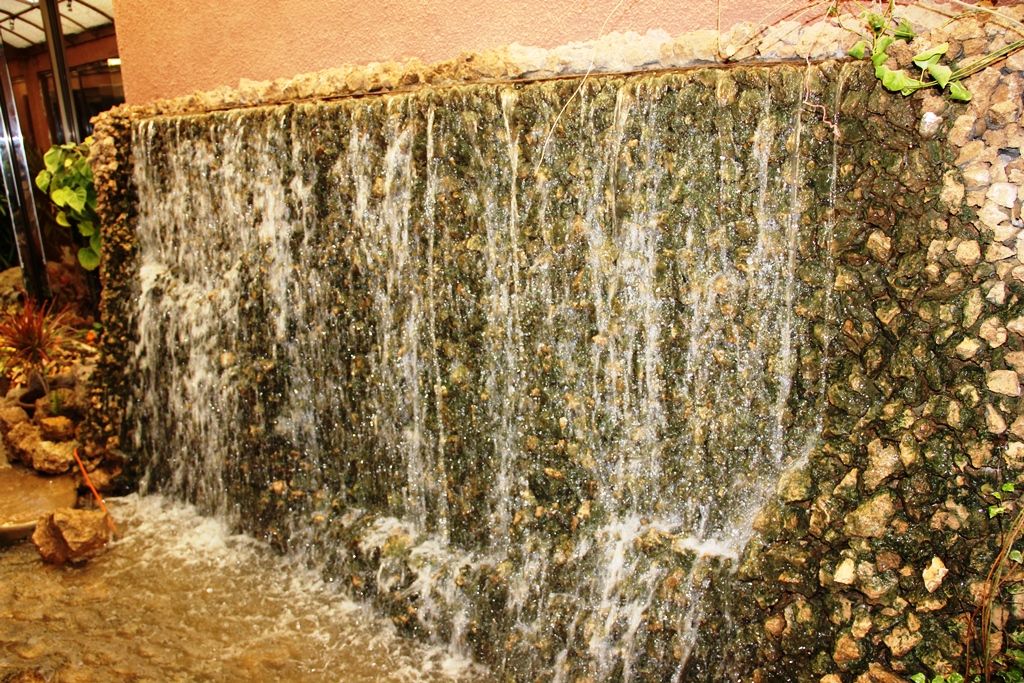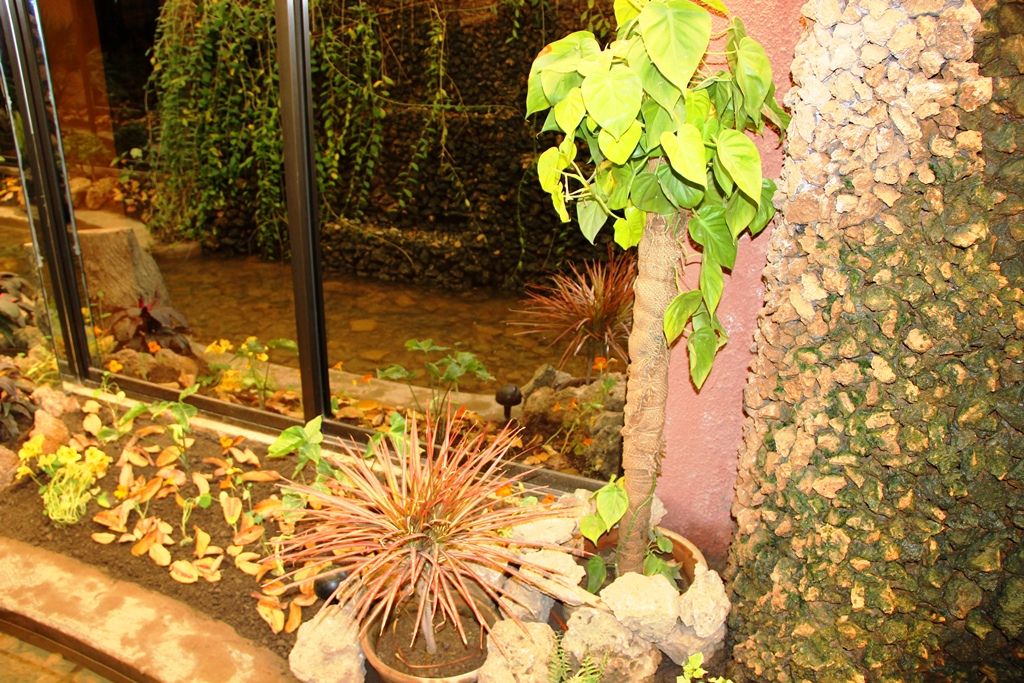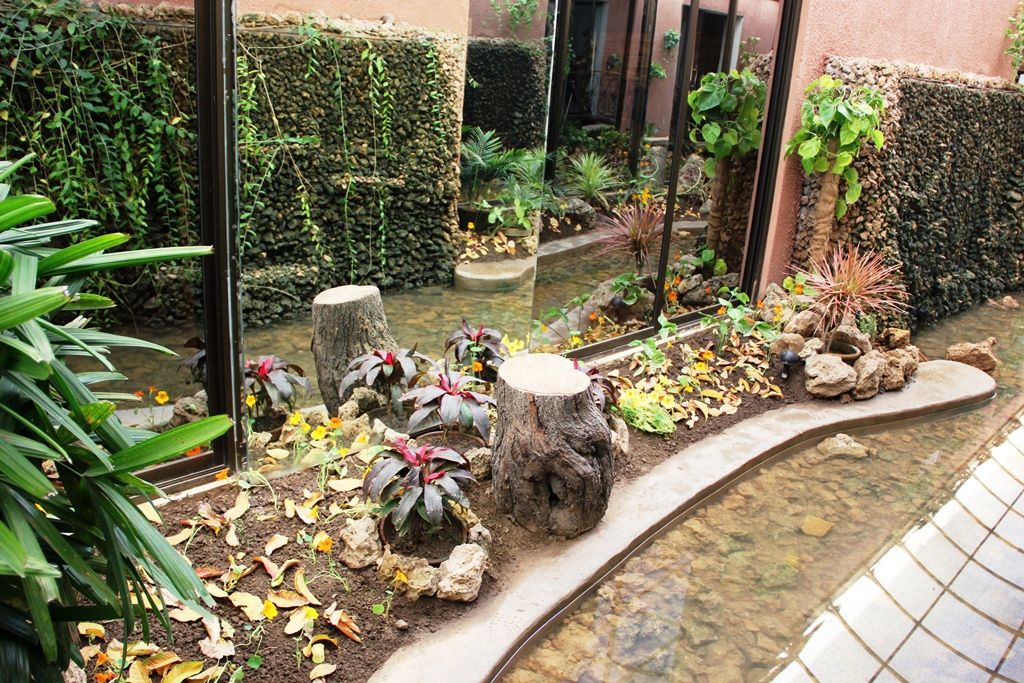A friend of mine, who has a wonderful house, had an atrium designed in the centre of the house. It was a narrow gully in fact, about 8 ft wide and 40 ft long that divided the house in two parts. Windows of common rooms and bedrooms opened in the atrium, were kept of full size and had one way see-through glasses installed. That meant that the person in the room could see outside while looking from outside, the glass acted as a mirror and nothing would be visible. The roof of this atrium was made of fibre glass, allowing strong light inside but no direct sunlight.
The idea was excellent and the place was ideal for growing plants. My friend, who is very fond of plants but doesn’t have much knowledge about them, hired a professional landscaper who specialised in making rockeries. He installed a water circulation system, constructed a couple of water falls, left a 2.5 to 3 ft wide water way in the centre of the 8 ft wide atrium leaving hardly any space on the sides. The limited space on the sides had soil in it. After constructing rockeries and installing some expensive lights, he stuffed the sides with expensive plants which were of course supplied from his own nursery (most of these professional landscapers have their own nurseries or are commercially affiliated with some nursery). The pots were shabbily placed inside the soil, making them look as if the plants are growing in the soil. It looked good, as they say (I didn’t see it at that time). After that, the landscaper charged few hundred thousand rupees and went away. However, after few months plants started dying and within a year, it was a complete mess. The landscaper was called again who told them that they did not take care of the plants that’s why they died. He removed the dead plants, planted new plants and charged them another half a lack rupees. While leaving he offered that he can send a team every month or fortnight to take care of the plantation but my friend thought that the charges he demanded were too much. He therefore said thanks and requested the landscaper to give him the tips to maintain plants. The landscaper obliged. Despite following the tips religiously, the plants again started dying after few months and it was again a mess. My friend, rightly so, was very dejected on the whole episode.
During one of my visits, knowing my interest in gardening and landscaping, my friend requested me to put the atrium right but also said that now he does not have lacks of rupees to do it. He wanted a solution which was good looking, cheap and durable. Professional landscaper had told my friend that if he wants something good looking and durable, it can’t be cheap and he will have to spend money. I accepted the challenge and along with my friend, his sons, one mali and two other servants, started the job. My friend, seeing my passion, announced that he wouldn’t mind spending money again if it is going to be something good.
We worked mostly on weekends and during evening hours and it took us around a month to complete the project. I did following major things during this project.....
1. The rockeries and water circulation system were fine so nothing was done in that area and it was left as such. The waterfalls and water way were also working fine so nothing was done there also though the stones lying haphazardly were rearranged.
2. I saw that the soil was saline and nothing desirable would have grown well in that soil. Therefore, I prepared a soil mix with bhal and lot’s of leaf mould and replaced complete soil inside the atrium. Soil preparation is a basic thing which many of us overlook before plantation.
3. I observed that the area did not allow proper air circulation and it gets really hot in Okara in May, June and July hence a need for proper air circulation. Though the landscaper had installed two heavy duty exhaust fans to ensure air circulation; those exhaust fans, besides being heavy on electric bill, produced lot of noise and one felt as if he is sitting inside a factory. I therefore removed two panels of fibre glass sheets on the roof and raised them one feet by adding four pillars. The openings were covered with wire gauze to stop entry of insects. This was done at two places and ensured that the hot and less moist air which rises up being light, goes out of the opening and is replaced by heavier cool air which will immediately settles down. Water in the rockeries will maintain the desirable humidity.
4. Most of the old lights were reused. A few spot lights were added in the required areas.
5. Now the plantation. I decided to go for good quality, beautiful looking, low maintenance and robust plants. Fortunately in Pakistan, such plants are normally quite cheap. They are cheap because either they are local or very well acclimatised in our areas. They survive all weathers, propagate easily and are therefore in abundance in our nurseries; hence cheap. They are beautiful because they grow well and maintain a lush green state most of the time. They are low maintenance because they are well acclimatised and are robust. Most of the plants bought therefore were the cheapest available in the nursery. Only few expensive plants were purchased. They were expensive not because they were rare but because they were of large size. I wanted few plants to create an immediate effect hence large size plants.
6. THE WHOLE FINESSE DEPENDED ON CORRECT PLANT ARRANGEMENT. These cheap plants were to be arranged in a manner that collectively, they present a lush green scenery. The window mirrors provided me an opportunity to multiply the effect, ie, by planting less plants and making using of their reflection through the mirror, I could make it look as if lot of plants have been planted. However, the location of plant was critical to ensure reflection through multiple window glass mirrors. That was done by arranging plants here and there and finally, we were able to achieve a setting in which every plant could be seen at least twice and from certain angles, three or four times, through its reflection in the window glasses. In simple words, if we were to plant 50 plants, 100 to 150 plants would be visible at one time, when seen through different angles, due to their reflection in the mirrors.
7. Last thing was permanent water arrangement. My friend had a motor installed at his house which was probably at 100 feet. He also had the proper water, commonly called sarkari pani or committee wala pani, which comes through tube wells at over 400 ft, though the supply was not reliable. We made use of the water tank already available and created a source for watering the plants through sarkari pani. Water from 100 ft in Okara is still quite saline and contains many undesirable minerals which keep getting accumulated in the soil and make it saline over a period of time. That is why it was important to use water from 400 ft which is much cleaner. Mali was strictly instructed never to use the water from motor and only to use sarkari pani for watering the plants.
8. Most of the plants were planted in soil and it was ensured that they all should have similar water requirement as it is impractical to have plants with different water requirements at one place and then trust mali’s wisdom on this account that every day he will only water a plant that much which is needed. And if the plants are closely planted, osmosis process in the soil will ensure that water is spread all around, even if one is watering a particular plant more and another one less, depending on their need.
9. Those plants which had different water requirement or it was intended to keep the size of those plants under control, were not removed from the pots and whole pot was dug inside the soil. They were however less in number and most of the plants were planted in the soil.
In the end, after a month’s work, we came up with something which looked quite nice. The best thing was that the whole plantation was worth 12000 Rs only, far less than what my friend was expecting. The total number of plants in the atrium was around 250.
To my satisfaction, atrium is doing well and in the next episode, I will share a few pics too.
Sorry for a long writeup.....


